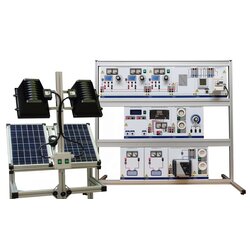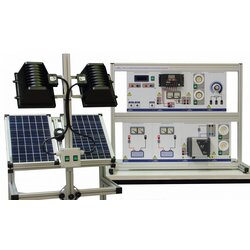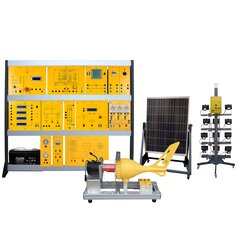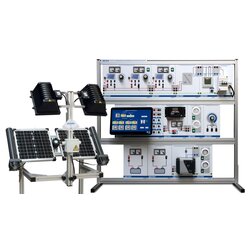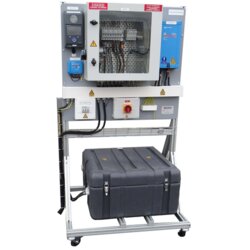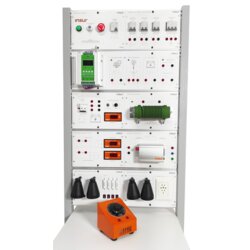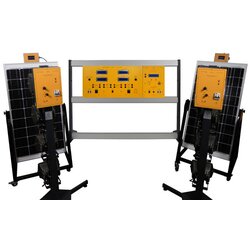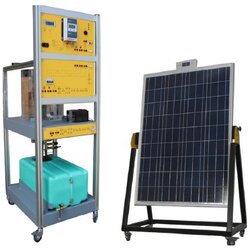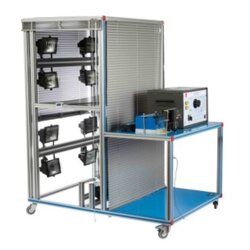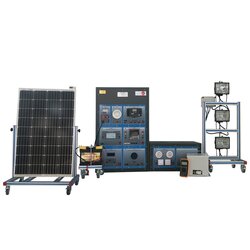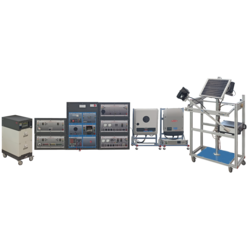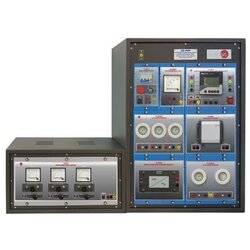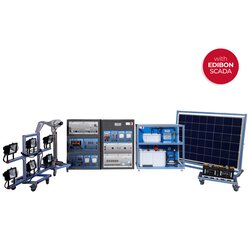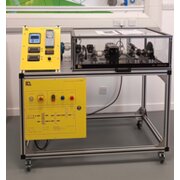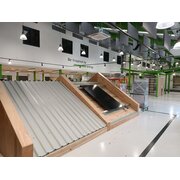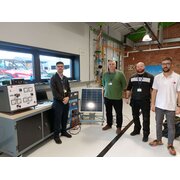Solar Training System & Lab Equipment
Sort by
Learn about Solar Training Systems
In this section we will cover various topics related to solar energy lab equipment and training systems. More precisely we focus on solar photovoltaics (PV) technology, we have a separate category for solar thermal training systems.
What is a Solar Training System?
A solar training system can be referred to as “instructional technology”, “lab equipment” or “didactic tools” which is specifically designed to teach learners about solar technology.
A solar training system normally includes hardware or equipment, sensors and software, and content and learning materials.
Solar training systems are normally used in vocational and technical education and training (TVET) and late secondary or post-secondary levels, such as colleges, polytechnics, and universities.
Why teach Solar Technology?
Many sources of our electricity generation around the world are based on non-renewable energy such as coal plants, oil, and gas production.
When these sources of energy are extracted and burnt to provide electricity, they lead to increased amounts of Carbon Dioxide (CO2) in the atmosphere which in turn creates global warming.
Global warming is drastically affecting many ecological systems and biodiversity in a negative way, which in turn is also endangering the human population.
The benefit of Solar energy is that it is renewable, which means that it does not contribute to global warming when generating electricity.
Furthermore, Solar energy is cheap (provides savings vs other energy sources), has no moving parts (low maintenance), and it is clean of air pollution (no exhaust gas).
Best practice teaching Solar Technology
Its important to take a blended learning approach to teaching solar technology, where the students will learn both theory from content, and practical utility from hands-on / kinesthetic / applied learning experiences, such as working with a Solar Training System or Solar Lab Equipment.
There are various benefits to hands-on learning, below a few reasons:
- Content Retainment is higher
- Increased student engagement
- Better critical thinking and reasoning skills
- Better preparedness for joining the workforce
- Improved safety knowledge
Components of Solar Training System
There are two different types of solar training systems, either they are designed to be used with real solar power, or with simulations of solar power (which is more common).
When the system uses simulations of solar power that is in the form of a strong artificial light source, such as halogen lamps or halogen spotlights.
Photovoltaic (PV) solar panels are collections of smaller cells which are mounted together in a framework for installation. Solar panels use sunlight (or in an indoors simulation – strong halogen lamps) to generate direct current electricity.
Since solar power is intermittent, batteries are used for energy storage, most often lead acid batteries which require regular maintenance and are sensitive towards overcharging.
A charge controller is a system which is protecting the batteries from overcharging by monitoring the battery charge level and if necessary, redirects the energy towards a load.
An electric system can be run both on AC (alternating current) and DC (direct current). AC current is more efficient when transported long distance, while DC current is used in most electronic devices. A DC-AC inverter changes the DC generated by the solar PV system into AC.

